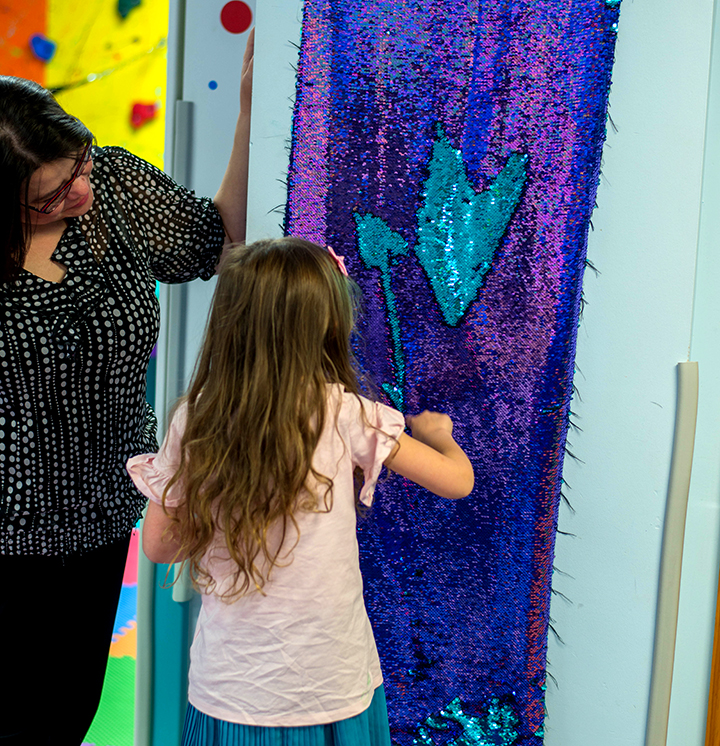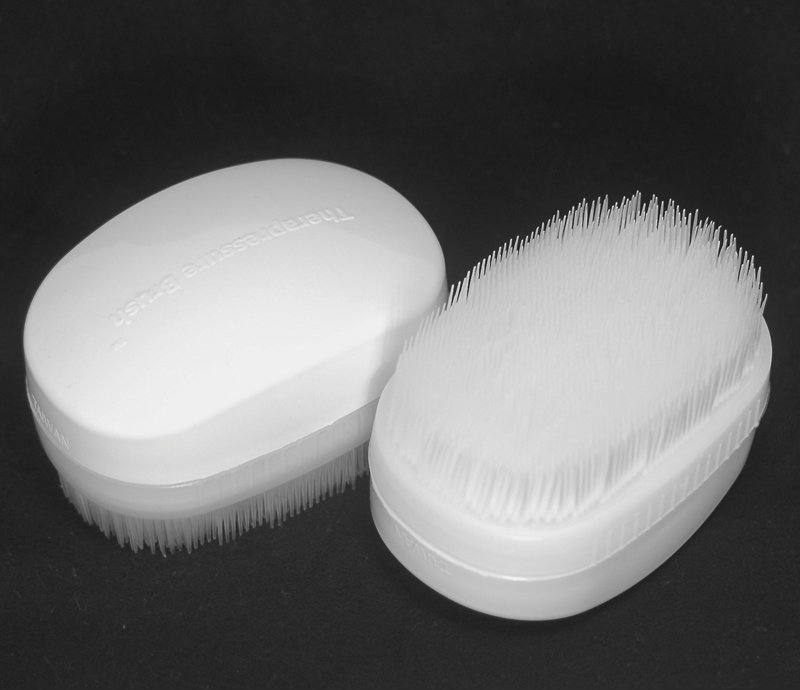
The Wilbarger Protocol (Brushing Therapy) for Sensory Integration
The Wilbarger protocol is the most prescriptive program used to treat sensory overresponsivity in children aged 2-12 years. Strong anecdotal evidence suggests that the Wilbarger protocol.

Wilbarger Brushing Protocol Who Can Do It? Wilbarger brushing
Wilbarger Protocol is not firmly established, therefore, all articles that examined the use of the Wilbarger protocol were considered in the evidence findings. Keywords: Sensory Defensiveness, Sensory Treatment, Occupational Therapy, Wilbarger Protocol, Brushing Therapy, Brushing Technique in Treatment.

Wilbarger Therapy Brush, 6 Pack Therapressure Brush for Occupational
The Wilbarger deep pressure and pro-prioceptive technique (DPPT), which in the past was referred to as the Wilbarger Brushing Protocol, refers to the specifi c sensory modulation techniques developed by Patricia Wilbarger, MED, OTR, FAOTA. WHAT IS DPPT USED FOR: DPPT was created to help address sensory defensiveness.

PPT Occupational Therapy Sensory Integration Interventions Part 2
The Wilbarger Deep Pressure Protocol is a very specific protocol, which entails more than simple brushing of the skin. Additionally, it is never practiced in isolation of other occupational therapies for sensory integration. Occupational therapists devise an individualized treatment plan to meet the "sensory diet" needs of each client.

Wilbarger Brushing Protocol Performance Pediatrics
The Wilbarger Protocol, also known as Brushing Therapy, or The Wilbarger Deep Pressure. Protocol (WDPP) utilizes deep touch pressure and joint proprioception. The Wilbarger protocol aids children in sensory processing and integration for decreased seeking or defensiveness of tactile/touch and proprioceptive/muscle position stimuli.

SENSORY BRUSHING Therapeutic Brushing & Joint Compressions (Wilbarger
The Wilbarger Brushing Protocol also known as DPPT is a very specific technique used for tactile defensiveness and sometimes other sensory processing challenges. The technique can be effective, BUT it is misunderstood, and often not taught correctly, and way over used in my professional opinion.

The Sensory People — Awesome chart on the Wilbarger Brushing Protocol
Implementation of the Wilbarger Deep Pressure and Proprioceptive Technique (DPPT), sometimes referred to as "The Brushing Program", in conjunction with a sensory diet, is recommended to help decrease sensory defensiveness.

Blog PlayWorks Therapy Inc. Pediatric Therapy Services Chicago
The Protocol The DPPT uses a specific pattern of stimulation delivered using a special type of brush and gentle joint compressions. It is believed to facilitate the coordination of mind-brain-body processes in a manner that influences positive change.

Wilbarger Brushing Protocol Joyful Journey Mom Sensory disorder
The input the Wilbarger protocol is. providing is known to last in the system for that amount of time, so it is necessary to repeat to. help keep the individual in the optimal zone of sensory modulation. If the protocol is going to be. effective for the patient, positive changes will be seen within several days.

UPDATE brushing sensory therapy 10 yrs later Wilbarger Protocol
The Wilbarger Deep Pressure and Proprioceptive Technique (DPPT) & Oral Tactile Technique (OTT) The Wilbarger Deep Pressure and Proprioceptive Technique (DPPT) & Oral Tactile Technique (OTT), which in the past was referred to as the Wilbarger Brushing Protocol, refers to the specific sensory modulation techniques developed by Patricia Wilbarger, MEd, OTR, FAOTA. Patricia Wilbarger is an.

Escovacao Sensory diet, Pediatric physical therapy, Sensory
Join OT MacKenzie as she demonstrates how to use a Wilbarger brush to support sensory regulation. Make sure to ALWAYS FOLLOW BRUSHING WITH COMPRESSIONS by us.

Brushing Sensory awareness, Sensory disorder, Kids sensory activities
The aim of this systematic review was to identify and appraise the existing evidence for the effectiveness of the Wilbarger protocol with children aged 0-18 years. Methods: A systematic review was conducted of the peer-reviewed literature written in English. The electronic databases searched up to April 2012 included CINAHL, Ovid Medline (R.

The Wilbarger Protocol (Brushing Therapy) for Sensory Integration
The Wilbarger Protocol for sensory defensiveness. First let's clarify some terms. Did you know the NEW name for The Wilbarger Protocol (what some used to call the Wilbarger Brushing Protocol, or WBP) is now The Wilbarger Deep Pressure and Proprioceptive Technique (DPPT)?

Wilbarger Brushing Protocol (OT Brushing Joint Compressions), via
The Wilbarger Protocol is designed to be used in conjunction with an individualized sensory "diet" based on the specific needs of the child and carried out under the guidance of someone familiar with the protocol and trained in sensory integration theory and practice.

Wilbarger Brushing Protocol Performance Pediatrics
THE WILBARGER PROTOCOL FOR SENSORY DEFENSIVENESS (Please do not reproduce Deep Pressure and Proprioceptive Technique (DPPT) received face to face distribute instruction handout. a trained occupational be used only therapist.) by someone We discrimination. have two ways or not we need to respond to it.

AUTISM Sensory Wilbarger Brushing ZVibe Tips Tricks Toys 16 Sensory
Wilbarger brushing protocol, a sensory integration technique. This video introduces Occupational therapy students or families on what brushing protocol is an.